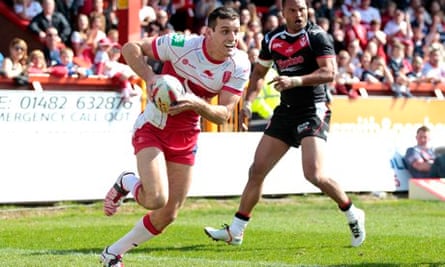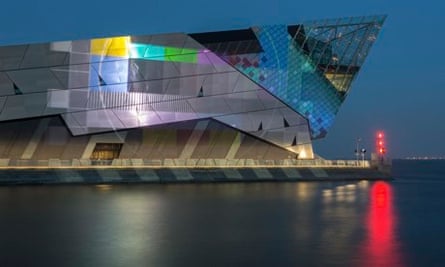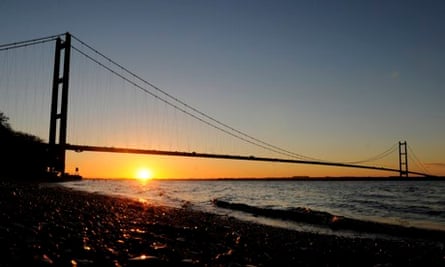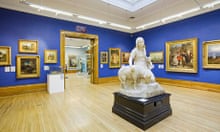1 White phone boxes
Hull's independence and proud municipal history are symbolised by its unique white phone boxes. The city's council-run telephone exchange, Kingston Communication, was flogged off to a private company in 2007, but the creamy white phone boxes remain. It is still the only locally operated telephone company in the UK.
2 Few green cars
According to one of Hull's many fishing superstitions, the colour green is considered unlucky. Veteran trawlermen would rip off any green scarves or hats worn by young deck-hands unversed in local lore. The fear was that green would be followed by black. Even today there are few green cars on the streets of Hull, and the city council avoids using the colour.
3 Rugby league

Hull City may enjoying their second foray into the Premier League, but the city's first sporting love is rugby league. The city boasts two top-flight rugby clubs: Hull KR (formerly Hull Kingston Rovers) and Hull FC. Traditionally people from the east of Hull are Rovers fans, while those to the west support Hull FC. The city's love of the sport is immortalised in a stretch of A63 named Clive Sullivan Way, after the Wales and Great Britain winger. Diplomatically he had stints playing for both Hull and Hull KR. In 1972 Sullivan became the first black captain of any British national sporting side, and led the team to the Rugby World Cup.
4 A fearsome of reputation for law and order
In 17th-century Hull, decapitation was once considered too good for criminals. Instead they were tied to gibbets in the Humber estuary at low tide and left helplessly to watch the return of the tide that would eventually drown them. The punishment is thought to be the reason for an infamous line in the 1622 poem the Beggar's Litany: "From Hell, Hull and Halifax, Good Lord deliver us."
5 The Scale Lane bridge

It was supposed to connect the city centre to a hoped-for redevelopment on the eastern side of the river Hull. Inevitably it was dubbed the bridge to nowhere after the regeneration failed to materialise. But the Scale bridge, also known as the "pinball flipper", which the public can ride as it rotates to allow ships to pass, has become a destination in its own right, according to the Observer's architecture critic Rowan Moore. He wrote: "It's not a gleaming white rebuke to its industrial surroundings but – robust and black – an extension of a place where, as one of the bridge's architects says, 'even the mud is beautiful'."
6 The Deep

In pre-austerity Europe there was a fad, and the funds, for iconic buildings to lead regeneration of rundown industrial cities. Bilbao got the Guggenheim museum, Hull got the Deep – an aquarium, museum and environmental charity, housed in Sir Terry Farrell's £45m glass and aluminium building overlooking the Humber estuary. It attracted more than double the expected number of visitors in its first year.
7 Hull's museum quarter
Hull has an abundance of free museums. They include the Hull and East Riding Museum for archaeology and local history; the Streetlife Museum; the Ferens art gallery, and Wilberforce House, charting the history of slavery and its eventual abolition. Hull's fishing history is celebrated in the Maritime Museum and a renovated trawler in the harbour, the Arctic Corsair.
8 The Humber bridge

The Humber bridge is so big that its huge vertical towers are marginally further apart at the top than the bottom because of the curvature of the Earth. It held the record for the world's longest suspension bridge for 16 years. It was opened to traffic in 1981 to much local relief after many delays and financial difficulties. The idea of the Humber crossing was first mooted in the 1920s.
9 The Larkin Trail

A walk around 25 haunts of Hull's most celebrated resident, the poet Philip Larkin. He was born in Coventry but was a librarian at Hull University from 1955 until his death in 1985. He remained fond of the city in his characteristically miserable way. "A place cannot produce poems," he wrote, "it can only not prevent them, and Hull is good at that. It neither impresses nor insists."
10 Hull's music scene

Hull's most famous band, the Housemartins, were so proud of the city that they named their first album London 0 Hull 4. Paul Heaton, who went on to front the Beautiful South, said he could only write lyrics in Hull. "When people say your lyrics are quite dark, well, it's simple. I go to Hull in the middle of winter to write them," he said. But other than Heaton and his fellow Housemartin Norman Cook, AKA Fatboy Slim, Hull's musical connections are a little more tenuous. Tracey Thorn of Everything But the Girl went to the city's university, and David Bowie's guitarist Mick Ronson was born and brought up in the city.






Comments (…)
Sign in or create your Guardian account to join the discussion